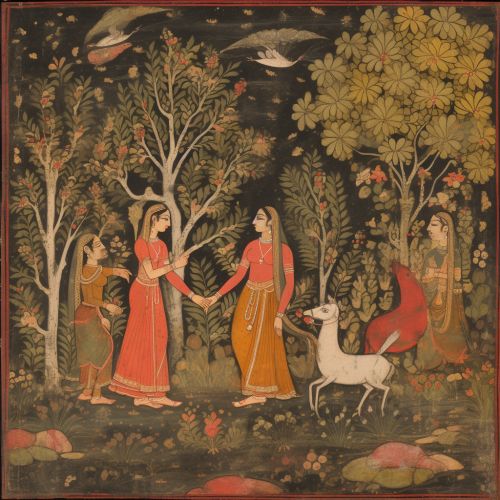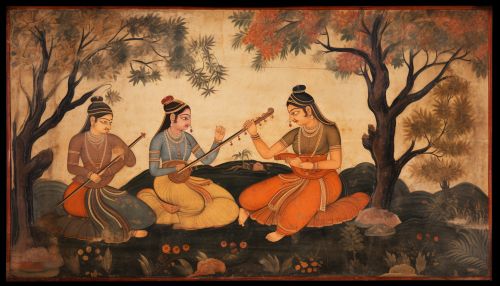Hindu texts
Introduction
Hindu texts are manuscripts and historical literature related to any of the diverse traditions within Hinduism. A few texts are shared resources across these traditions and broadly considered as Hindu scriptures. These include the Vedas and the Upanishads. Scholars hesitate in defining the term "Hindu scripture" given the diverse nature of Hinduism, many include Bhagavad Gita and Agamas as Hindu scriptures, while Dominic Goodall includes Bhagavata Purana and Yajnavalkya Smriti.


Classification
Hindu texts are classified into two types: Shruti and Smriti. Shruti literature is considered sacred, believed to be the words of gods, heard by ancient sages, and transmitted to the next generations orally. The Smriti literature is considered less authoritative than Shruti, yet it has been influential to the culture and daily lives of Hindus. It includes the Mahabharata and Ramayana.
Shruti Texts
Shruti texts are those that are heard or revealed, from the Sanskrit root śru. They are also called apauruṣeya, which means "not of a man, superhuman" and "impersonal, authorless". The key Shruti texts are the four Vedas and their four types of embedded texts - the Samhitas, the Brahmanas, the Aranyakas, and the Upanishads.
Vedas
The Vedas are the oldest and most authoritative Hindu scriptures. They are divided into four collections: the Rigveda, the Yajurveda, the Samaveda, and the Atharvaveda. Each Veda has been subclassified into four major text types – the Samhitas (mantras and benedictions), the Aranyakas (text on rituals, ceremonies, sacrifices and symbolic-sacrifices), the Brahmanas (commentaries on rituals, ceremonies and sacrifices), and the Upanishads (texts discussing meditation, philosophy and spiritual knowledge).
Upanishads
The Upanishads are the end part of the Vedas and are often called Vedānta, which means the purpose or goal of the Vedas. They primarily discuss philosophy, meditation, and the nature of God, and form the core spiritual thought of Vedantic Hinduism.
Smriti Texts
Smriti texts are "remembered" or transmitted text, also called "secondary scripture". They are considered less authoritative than the Shruti texts, but have a large influence on the Hindu way of life. They include the epics of the Mahabharata and the Ramayana, the Dharma Shastras, the Puranas, and the Agama literature.
Mahabharata
The Mahabharata is one of the two major Sanskrit epics of ancient India. It is an epic narrative of the Kurukshetra War and the fates of the Kaurava and the Pandava princes. It also contains philosophical and devotional material, such as a discussion of the four "goals of life".
Ramayana
The Ramayana is an ancient Indian epic, composed by the sage Valmiki. It narrates the life of Rama, the legendary prince of the Kosala Kingdom. It depicts the duties of relationships, portraying ideal characters like the ideal father, the ideal servant, the ideal brother, the ideal wife, and the ideal king.
Dharma Shastras
The Dharma Shastras are legal and ethical texts. They include laws of conduct, rites, rituals, and legal procedures. The most famous of these is the Manusmriti, or "Laws of Manu".
Puranas
The Puranas are a genre of important Hindu, Jain and Buddhist scriptures, providing information on the legends of the divine and the ancient, history, cosmology, heroes, kings, philosophy, and rituals.
Agamas
The Agamas are non-Vedic religious texts which provide information on temple construction, deity worship, rituals, and ways to lead one's life, and they are prevalent in South India.
